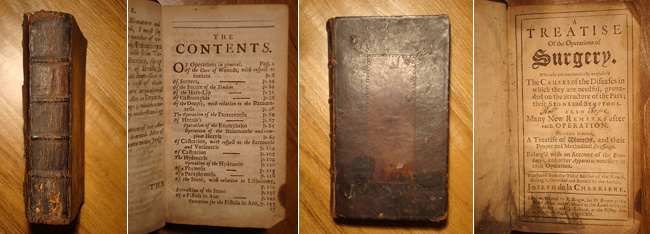Charles Hanson, of Hansons Auctioneers, said the book provided a fascinating insight into 18th century medical knowledge.
'The book was brought in to one of our valuation days,' he said. 'A member of the public came in with these old bibles and scriptures and encyclopaedia and at the bottom of the pile was this rather interesting little book.
'Given its age, its condition is superb. The book would have proved invaluable to surgeons in its day - it would have been like a bible for them to use and refer to when operating.'
Undergoing an operation was an extremely painful and deadly experience until ether anaesthetic was discovered in 1846.
The risk of dying from infection was greatly reduced from 1867 when Joseph Lister introduced carbolic acid as an effective anti-sceptic.
The book states: 'If the wound be only in the flesh you may bathe it with brandy and cover the part with a compressed dip in a warm wine quickened with spir vini.
'If the wound is to the nervous parts you can dissolve sugar candy, camphire and myrrh in it.'
Howard Ellis, professor of surgery at the Westminster Medical School and author of A History of Surgery, said having an operation was the very last resort for a patient in the 18th century.
He said: 'Back then you would only submit to an operation if you were in agonising pain or if you had something that was going to kill you. Most people just refused to have surgery.
'Having a limb sawn off without anaesthetic is just unimaginable. The surgeon would probably have just said "stick with it, this is going to hurt", they may have had some wood to bite down on.
'And yet having gone through that awful ordeal there was then a very high risk of death from infection.
'The dates of 1846 and 1867 represented a tremendous revolution in surgery and not very much has changed since then, it is just more refined.'
Prof Ellis said it was quite common for surgeons to write about their practises and medical students and fellow surgeons used their works as text books.
Read more:




Very interesting read, dear Doctor ( and the Ladies of the Courts will appreciate that you delicately skipped the included illustrations of the amputation methods, like the circular amputation or the double-flap amputation, consisting in...well, some ladies are still reading, let's change subject...)
I do prefer the Guillotine or no-flap amputation to be more precise... (who wants to see more pictures????)
I'm shockafter read what medicine was on those days...